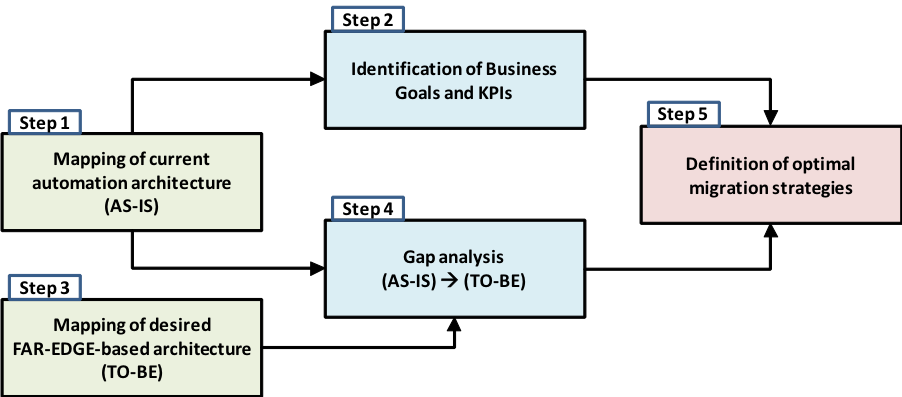The FAR-EDGE RA uses two classes of concepts for describing the structure of a system: Scopes and Tiers.
The vision of FAR-EDGE is to provide a first-of-a-kind Industrie 4.0 compliant factory automation (FA) platform based on the edge computing paradigm, which will deliver the benefits of the decentralized automation and without compromising the production quality, time and cost offered by existing platforms.
This vision is motivated by the lack of an I4.0 compliant edge computing platform for factory automation, which could benefit all stakeholders facilitating smooth migration from existing automation architectures (notably ISA-95) to more decentralized paradigms while providing support for the most common production systems and devices in the factory.
As of today there is still a predominance of hierarchical and centralized architectures in industry, the main challenge of FAR-EDGE is to mitigate manufacturers’ conservatism in adopting new technologies in their existing infrastructures providing them with roadmaps and strategies to guarantee a smooth and low-risk transition towards decentralized or hybrid control architectures
Migration Approach:
Identify the right migration path for different classes of conventional architectures as per 5 steps:

The goal is to define a migration approach to identify architectural blueprints, as migration steps, that ensure a cost-effective migration of conventional centralized control architectures towards the hybrid and decentralized one derived from FAR-EDGE.
Tools Employed:
AS-IS and TO-BE conditions are mapped to the Migration Matrix, which describes the required improvement steps on different dimensions to move from the current production system to the desired one (AS IS à TO BE). It is structured in rows and columns. The rows represent the relevant application fields with high potential of improvement by FAR-EDGE concepts implementation on the architecture in reference to technology innovations, factory process maturity and human roles, while the columns describe the development steps for each application field towards a higher level of production flexibility, intelligent manufacturing and business process in the direction of FAR-EDGE platform implementation.
Interviews and questionnaires are used to derive information about the factory on three dimensions: Technology, Operational and Human, which are split in a set of sub-dimensions. The goal is to identify the foreseen risks and obstacles related to the factory migration towards FAR-EDGE solutions and to define their abilities and competencies by answering the questions relative to the matrix sub-dimensions.
The digital readiness of a manufacturing company is defined through a scale of maturity levels, based on the Capability Maturity Model Integration (CMMI). Maturity indexes are computed and presented in Radar Charts to help in the identification of the appropriate architectural blueprints for the factories to incrementally decentralize their automation architecture towards FAR-EDGE solutions.

